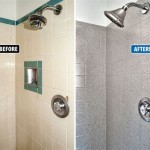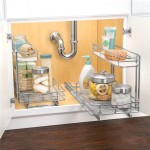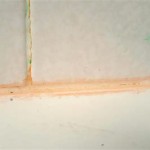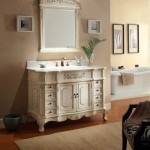How to Make a Bathroom Countertop Out of Wood
A wooden bathroom countertop can bring a touch of rustic charm and warmth to your space. While it may seem like a challenging project, it's achievable with careful planning and execution. This article will guide you through the process of creating a beautiful and functional wooden bathroom countertop, from selecting the right wood to finishing it for a long-lasting and water-resistant surface.
Choosing the Right Wood
The first step is to select the appropriate wood for your countertop. Consider the following factors:
- Durability: Hardwoods like maple, cherry, oak, and walnut are known for their strength and resistance to scratches and dents. These woods are ideal for high-traffic areas and can withstand the wear and tear of daily bathroom use.
- Water Resistance: Since a bathroom countertop will be exposed to moisture, it's crucial to choose a wood that is naturally water-resistant or can be treated to enhance its resistance. Teak, cedar, and redwood are excellent choices due to their high oil content, which repels water. Alternatively, you can use woods like oak or maple and seal them with multiple layers of marine-grade epoxy or polyurethane.
- Appearance: Consider the desired aesthetic for your bathroom. Some woods, like cherry, have a rich reddish-brown color, while others, like maple, have a creamy white hue. You can also choose wood with unique grain patterns or knots for added visual interest.
- Budget: The cost of wood can vary widely depending on the species and quality. Hardwoods tend to be more expensive than softwoods. You can find budget-friendly options by using reclaimed wood or choosing less expensive woods like pine.
Preparing the Wood
Once you've chosen your wood, the next step is to prepare it for the countertop. This involves cutting the wood to size and ensuring it's smooth and level:
- Cut the Wood: Measure the desired length and width of your countertop and cut the wood to size using a table saw or circular saw. Make sure to cut accurately to ensure a smooth and even surface.
- Sand the Wood: Sand the surface of the wood to remove any rough edges or imperfections. Start with a coarse grit sandpaper (80 to 120 grit) and gradually work your way up to finer grits (220 to 400 grit) for a smooth finish.
- Level the Surface: If necessary, use a plane or sander to level the surface of the wood and create a flat, even countertop.
Applying a Water-Resistant Finish
After preparing the wood, it's essential to apply a water-resistant finish to protect it from moisture and staining. This step is crucial for ensuring the longevity of your countertop:
- Marine-Grade Epoxy: This is a highly durable and water-resistant finish that is ideal for bathroom countertops. Apply multiple coats of epoxy to create a protective barrier. Ensure each coat is thin and evenly distributed for best results.
- Polyurethane: Another excellent option for waterproofing a wooden countertop is polyurethane. It's available in both oil-based and water-based formulations. Several coats of polyurethane will provide a protective layer against water and stains.
- Oil Finish: Natural oils like tung oil or teak oil can also be used to enhance the natural beauty of the wood and provide some water resistance. They create a less durable finish compared to epoxy or polyurethane, but they are still effective in protecting the wood from minor spills. Apply multiple coats of oil, allowing each coat to dry thoroughly before applying the next.
After applying the finish, allow it to cure completely according to the manufacturer's instructions before installing the countertop.
Installing the Countertop
The final step is to install the countertop on the bathroom vanity. This can be done using various methods, depending on your preference and the countertop's design:
- Attaching to the Vanity: This is the simplest installation method. You can use wood screws or construction adhesive to attach the countertop to the vanity countertop. Ensure the countertop is securely attached and level before proceeding.
- Adding Supports: For larger or heavier countertops, you may need to add additional supports underneath for added stability. Use brackets or cleats to support the countertop from below. Ensure the supports are evenly spaced and securely attached to the vanity or wall.
- Reinforcing the Edges: If you are using a countertop with a long edge, consider reinforcing it with a metal edge trim or a wooden edge molding. This will prevent the edge from chipping or splitting over time.
Once the countertop is installed, you can add a sink, faucet, and other fixtures to complete your bathroom vanity.
Remember to give the finished countertop ample time to cure before using it. This will ensure the finish is fully hardened and protected.

The Foolproof Guide To Diy Wood Countertops For A Bathroom

Diy Wood Bathroom Countertop An Easy Way To Change Your Vanity In 1 Weekend Noting Grace

Diy Vanity Tops For Your Bathroom

Diy Wood Bathroom Countertop An Easy Way To Change Your Vanity In 1 Weekend Noting Grace

How To Build Protect A Wood Vanity Top Houseful Of Handmade

Diy Bathroom Countertop Made From Cedar Fence Boards Addicted 2 Decorating

How To Build Protect A Wood Vanity Top Houseful Of Handmade

Diy Wood Bathroom Countertop An Easy Way To Change Your Vanity In 1 Weekend Noting Grace

Diy Bathroom Countertop Made From Cedar Fence Boards Addicted 2 Decorating

How To Build Protect A Wood Vanity Top Houseful Of Handmade
Related Posts







